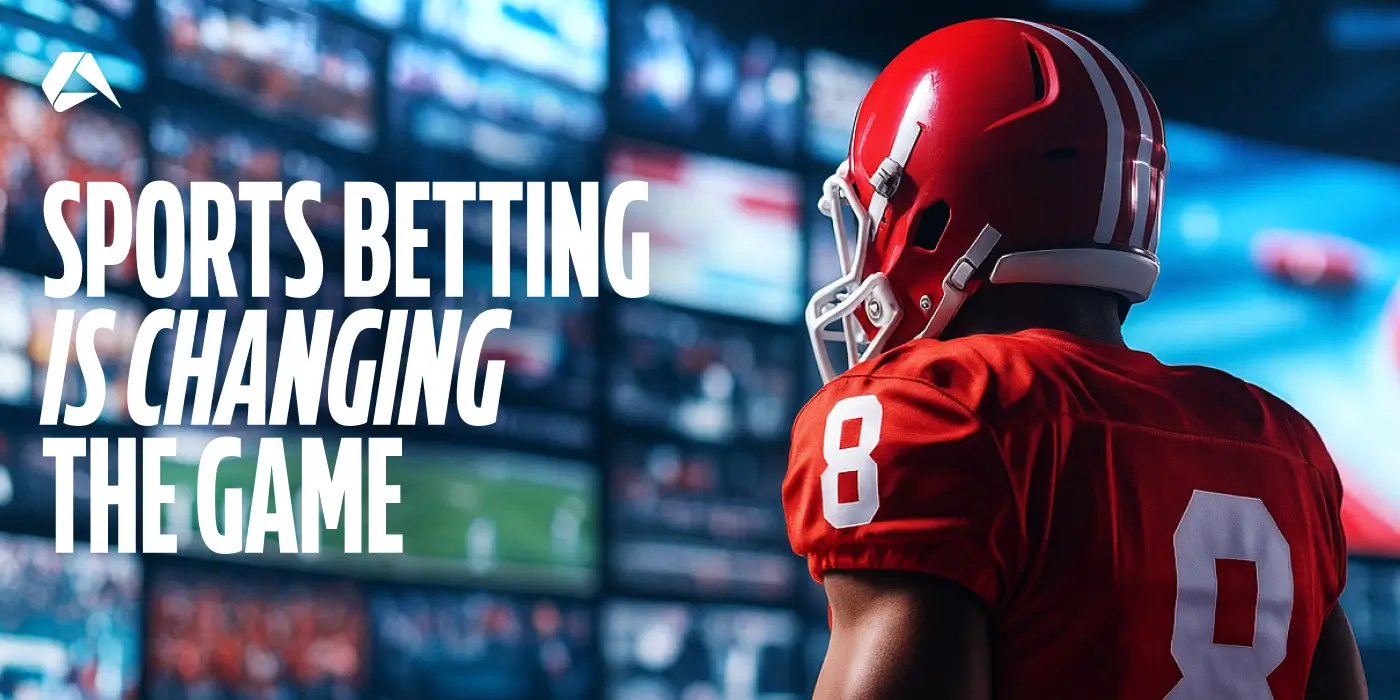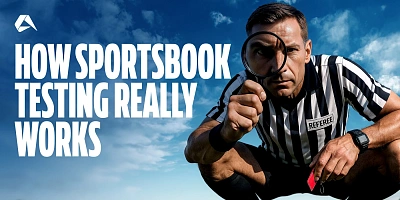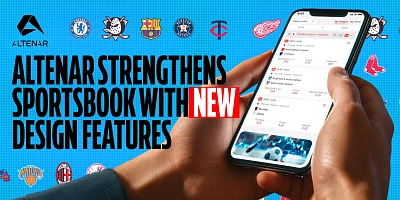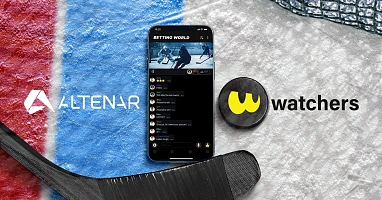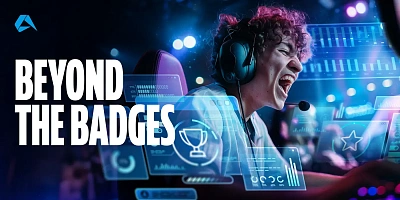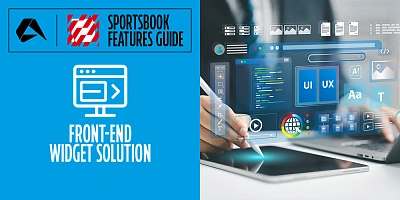Not so long ago, watching a major sporting event meant settling in for the match and catching up with the highlights later. Betting might have been part of the conversation, but it happened before the first whistle. Once the game began, however, the betting markets stood still.
Fast forward to today, and the picture has changed completely. Odds flash across the broadcast in real time. In many sports channels globally, commentary teams often reference betting lines during play. And with the advent of social media, it should come as no surprise that social feeds are in on the conversation, with live reaction to every change in momentum.
And the result? Today’s fans have one eye on the action and another on their phone, ready to place or cash out within seconds.
It’s indisputable that sports betting is reshaping how events are scheduled, broadcast, sponsored, and experienced. And while the current changes are evident to anyone who’s watched a game lately, the more important question is ‘where is this going next, and how should betting operators prepare for it?’
Viewing Habits Have Gone Interactive

Sports viewing has evolved from a laid-back experience into a high-speed, interactive environment and wagering now sits at the heart of the experience. Understanding how this change plays out today helps operators identify where the next opportunities will arise.
The Here and Now
The days of passive viewing are gone. Live betting, instant replays, VAR and second-screen stats have made fans active participants from start to finish. In-play markets keep them engaged even when the scoreline feels settled. Broadcasters have responded to this by integrating real-time odds into on-screen graphics, studio discussions, and even sending push notifications in some instances. Social media adds another layer. Live polls, highlights, and odds-based talking points keep the conversation going long after the match has ended. The result is a viewing culture where fans expect the game, the data, and the markets to move in sync.
What’s Next – Unified, Contextual Experiences
The natural progression is consolidation. Rather than jumping between a betting app, a broadcaster’s stream, and a social feed, fans will increasingly have one platform, whether it’s the sportsbook or the broadcaster’s app, that houses everything. Live odds, statistics, streaming, and chat features will be integrated into the same interface, with betting prompts triggered by real-time game events. Account linking will allow offers, bet histories, and personalisation to follow the fan wherever they watch, thereby maintaining high engagement.
What’s the Future – Full Convergence?
Given current futuristic predictions, the boundaries between watching and betting could disappear entirely in the longer term. Augmented reality (AR) might overlay odds directly onto the pitch through smart glasses. Virtual reality (VR), on the other hand, could recreate a stadium environment where fans watch the game, chat, and place bets in a single immersive space.
While this stage depends on broader technology adoption beyond the scope of what’s currently feasible, industry innovators are already laying the groundwork. Besides, the trajectory is already visible in how fans are consuming sports content today.
Strategic Takeaway
Operators who treat viewing and betting as separate experiences are already at a disadvantage. The winners will be those who integrate the two, starting with unified, contextual platforms that deliver betting opportunities as part of the natural flow of the match. This requires technology capable of handling live data, rapid market updates, and personalisation at scale. Not merely as bolted-on features, but infrastructure designed for real-time engagement.
Event Scheduling and Formats
Sports leagues have long adjusted schedules to accommodate TV audiences, but betting has added a new layer in recent years. The goal of maximising betting engagement, and thus profits, increasingly shapes the timing and structure of events for operators and organisers alike.
Today, we see leagues shifting kickoff times and event calendars to align with prime betting windows. For example, it wasn’t long ago that 3pm Premier League football kick-offs on a Saturday were the norm in the UK. Now, football leagues schedule high-profile matches at times when betting activity peaks across key markets, typically on Sunday afternoons or late evenings for weekday matches.
Moreover, breaks and timeouts have been tweaked to create more natural pauses that encourage in-play wagering. Some sports have adopted shorter formats, such as T20 cricket or rugby sevens, which condense more betting action into a shorter time frame. These adaptations reflect a clear recognition that betting activity influences when and how sports are presented.
The next evolution involves leveraging real-time data and predictive analytics to adjust event timing and format dynamically. Imagine leagues using live betting data to inform TV breaks, commercial placements, or even game pacing, optimising for maximum engagement. We could see flexible scheduling models where match times shift season to season based on betting demand insights, or micro-events within a game designed explicitly to create fresh betting opportunities.
Looking further ahead, entirely new competition formats could emerge, crafted primarily to cater to betting behaviours. These might include events segmented into short, high-intensity bursts tailored for rapid-fire markets. The goal will be to keep fans hooked by offering continuous, varied betting moments throughout an event’s lifecycle.
Key Takeaway
Agile sportsbook platforms enable operators to respond quickly to new event timings and betting opportunities.
Betting-First Sponsorships
Sponsorship has been a significant revenue stream for sports leagues and clubs for many years now, but the rise of betting appears to be influencing their priorities. To this extent, betting companies are no longer just sponsors, they’re integrated partners directing how brands interact with fans, broadcasts, and events.
Today, betting brands are headline sponsors for major leagues, clubs, and broadcast segments worldwide. Their presence is visible not only on kits and stadium boards but also part of the fabric of broadcasts and digital content. From branded segments focused on odds updates to dedicated betting shows, operators have become key storytellers in the sports entertainment industry. This drives betting engagement beyond traditional advertising.
From where we are now, it is not a stretch to imagine the next stage involving betting sponsors moving from passive visibility to active engagement. We’re seeing campaigns co-created by operators and leagues that blend live odds, fan challenges, and in-app offers directly into the event experience. Sponsorships will increasingly support interactive content and personalised promotions, turning passive viewers into active participants.
Key Takeaway
Operators should prioritise partnerships that enable interactive fan engagement and personalised brand experiences.
Data and Technology Are the Backbone
As any committed betting operator will tell you, behind every successful modern sportsbook is a complex web of data and technology. The demand for real-time betting has accelerated innovation in live data feeds, streaming infrastructure, and market automation. For operators, mastering these technical foundations is essential to staying competitive and meeting fan expectations.
Currently, sportsbooks rely on low-latency data feeds that deliver live stats, player performance, and event updates in near real-time. Streaming providers and broadcasters work closely with data partners to synchronise feeds, ensuring odds reflect the game as it happens. In addition, automated market creation and settlement tools help operators scale rapidly during peak events without compromising accuracy.
The next natural step in data evolution lies in AI-driven models that have the potential to analyse historical and live data for predictive odds, personalised recommendations, and dynamic risk management. While still in early or pilot stages for most, these technologies signal the direction sportsbook innovation is headed. Gradual adoption will enable smarter markets and more tailored user experiences as the technology matures and becomes more widely integrated.
In the foreseeable future, however, it’s an odds-on certainty that data will become more granular. Computer vision and sensor data could feed instantly into sportsbooks, enabling micro-betting on player movements and split-second events. Operators might integrate rich, visual data layers into broadcasts or apps, creating new ways for fans to interact with the game and place bets.
Key Takeaway
Operators should be prepared to invest in scalable, AI-enabled data infrastructure to deliver fast, personalised betting experiences.
Regulation Is a Moving Target
Regulation has always been a significant factor in the betting environment. Operators must adhere to a patchwork of rules governing advertising, player protections, and market access, all while striking a balance between innovation and compliance.
At present, regulatory environments vary widely across markets. Advertising standards dictate how and when betting can be promoted during events, with some jurisdictions imposing strict limits or outright bans on such promotions. Player protection measures are increasingly tightening, with self-exclusion schemes, betting limits, and mandatory responsible gambling messaging becoming standard. Furthermore, regulated operators must monitor suspicious betting patterns to prevent match-fixing and other forms of financial fraud.
For these reasons, the future of regulation is likely to point toward smarter and faster technology-driven compliance. Operators are beginning to adopt AI-based monitoring systems that can identify risky behaviour in real time and automatically enforce restrictions. Regulatory frameworks themselves are evolving toward harmonisation in some regions, but operators must remain agile to comply with local demands.
Key Takeaway
Looking ahead, operators should prioritise flexible compliance systems that can quickly adapt to changing regulations without disrupting the user experience.
Fan Experience Is the New Battleground
With technology and regulation heavily influencing the betting environment, the ultimate test for operators lies in winning and keeping the attention of today’s demanding and connected fans.
As we have pointed out, betting is no longer just about odds and payouts. In essence, it’s fast becoming an integral part of the live sports experience. Some forward-thinking operators are on the path to embedding gamified features, social interactions, and personalised offers directly into apps and broadcasts.
Fans expect that placing a bet feels as natural as watching a highlight. Features like in-play challenges, leaderboards, and community competitions deepen engagement and create a sense of belonging around betting activities.
Looking ahead, operators will increasingly leverage AI and data analytics to deliver hyper-personalised betting experiences tailored to individual preferences, behaviours, and viewing contexts. This could include dynamic odds customised to risk appetite, tailored promotions triggered by in-game events, and AI-driven companion apps that act as personal betting coaches or social facilitators.
As a result, it is not a stretch to imagine that fan engagement will centre on social-first systems with integrated chat, and the emergence of shared betting pools to blend community with competition. Operators may offer rich multimedia content, interactive storytelling, and real-time fan-driven market creation, creating an entertainment hub that goes beyond traditional sportsbook offerings.
Key Takeaway
Operators who prioritise personalised, engaging fan experiences will build stronger loyalty and differentiate themselves in a crowded market.
Integrity Concerns and Controversies
As sports betting becomes more intertwined with major sporting events, integrity risks and controversies naturally come into greater focus. Operators must recognise these challenges and proactively manage them, not only to comply with regulations but to protect brand reputation and ensure sustainable growth.
Match-fixing and suspicious betting patterns continue to pose a significant threat. With in-play betting and rapidly changing markets, the window for manipulation widens. Operators should invest in capable monitoring systems that analyse betting behaviour in real time, flag anomalies, and trigger investigations promptly.
Public perception also matters. Even isolated controversies can damage trust and lead to stricter regulation. Transparent communication, visible responsible gambling tools, and active customer education help build credibility with fans and regulators alike.
Looking forward, operators will increasingly benefit from integrating advanced integrity monitoring platforms that combine AI with human expertise. Collaboration with external integrity services and sports bodies will improve the detection and prevention of match-fixing schemes. Operators should seek sportsbook providers that support automated alerts, data sharing, and compliance workflows designed around integrity.
Reading the Field Two Moves Ahead
It should be clear to anyone paying attention that the role of sports betting in live sports is no longer a supporting act. Far from it, it’s becoming part of the main event. Broadcasters, leagues, and operators are exploring ways to integrate odds, statistics, and engagement tools directly into the viewing experience, whether on a big screen or from within a streaming app.
That creates both an opportunity and a challenge. Operators must not only keep pace with these integrations but anticipate where they’re heading next. The winners will be those who invest in adaptable tech, build strong data pipelines, and keep a direct line into how fan behaviour is evolving, so that when the next advancement comes, they’re already there to meet it.
The next wave of sports betting innovation is already taking shape. To see this firsthand, book your personalised demonstration with Altenar now and explore the tools and technologies designed to keep you ahead of broadcast integrations, streaming trends, and evolving fan behaviours.
